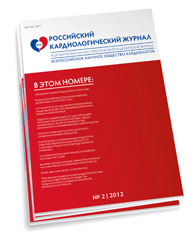CHD linked to osteoporosis in older adults
Older adults with a history of coronary heart disease have a substantially lower cortical volumetric bone mineral density at the distal radius, putting them at risk for fracture, according to research in Osteoporosis International.
Using high-resolution peripheral quantitative CT (HR-pQCT) in a population-based study to measure bone geometry, density and microstructure in adults with and without a history of CHD, researchers also found the lower cortical volumetric BMD measurements were more prominent in women with heart disease than men.
“This is one of the first studies to use this technology to explore bone geometry, density and microstructure in patients with heart disease,” Cyrus Cooper, OBE, MA, DM, FRCP, FFPH, FMedSci, director of the MRC Lifecourse Epidemiology Unit at the University of Southampton, United Kingdom, said in a press release. “These findings highlight the need to evaluate a history of heart disease in the management of osteoporosis in older people and further research is also needed to provide a better understanding of the underlying mechanisms which explain the link between osteoporosis and heart disease.”
Cooper, Julien Paccou, MD, PhD, a clinical research fellow at the University of Southampton, and colleagues analyzed data from 350 adults (184 men; mean age, 76 years) aged 71 to 80 years with or without ischemic heart disease who were participating in the Hertfordshire Cohort Study. Within the cohort, 75 participants had a history of myocardial infarction, angina or heart failure. Researchers used HR-pQCT to measure bone geometry and volumetric BMD at the distal radius and distal tibia. Participants also agreed to a home visit that included a structured interview and physical exam. Participants self-reported any history of heart disease, diabetes, high blood pressure or fracture.
Within the cohort, participants with a history of heart disease had a lower cortical volumetric BMD (P < .001) and a higher cortical porosity (P = .016) in the distal radius compared with participants who did not have heart disease. Cortical thickness measurements and trabecular microarchitecture parameters were not different between the two study arms.
After adjusting for age, sex, BMI, high BP and diabetes, cortical volumetric BMD remained lower in the heart disease arm (P = .002).
Researchers found no differences in distal tibia bone parameters between participants with and without heart disease.
“In essence, this work and others show that people with a history of cardiovascular disease tend to have weaker bones,” Paccou said in a press release. “There is a need to better understand this association to improve bone health.” – by Regina Schaffer
Disclosure: Cooper reports receiving consulting fees or honoraria from Alliance, Amgen, Eli Lilly, GlaxoSmithKline, Medtronic, Merck, Novartis, Roche and Servier. The other researchers report no relevant financial disclosures.
Source: www.healio.com






